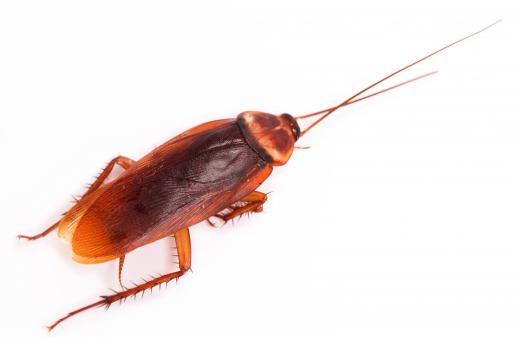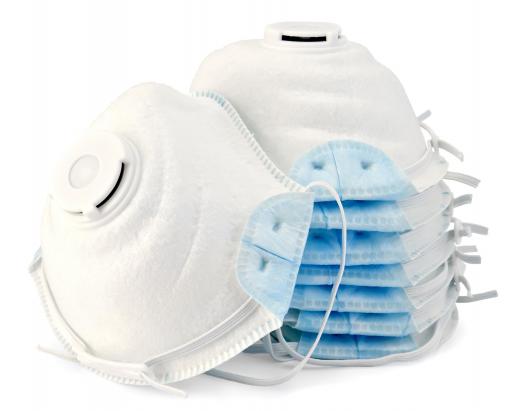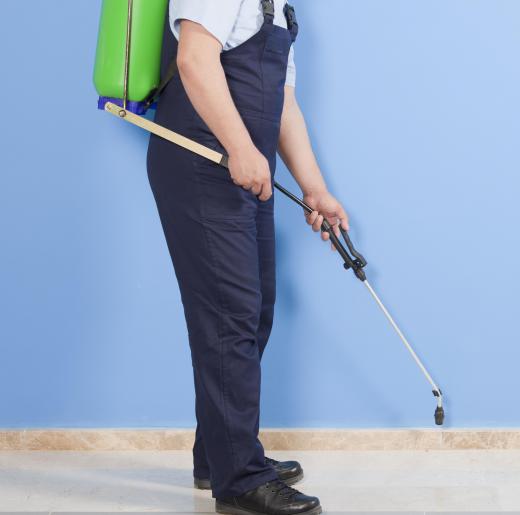Fumigating is a technique used by pest control workers to eradicate insect infestations from enclosed spaces such as homes, warehouses, and barns. Professionals release toxic gases inside a carefully contained structure, which effectively suffocates or poisons the pests within. Fumigating is often necessary when less invasive extermination procedures are ineffective at eliminating pest populations. There are strict environmental and safety laws regarding fumigating processes in most countries, and professional exterminators are often required to hold specialized certification to perform the job.
Common pests such as termites, bedbugs, and ants can be eradicated by fumigating a structure. For homes and small buildings, a process known as whole-structure fumigation or tenting is used to ensure that all areas are treated. Tenting involves enclosing a structure under a tent made from specialized rubber and fabric. Exterminators will thoroughly inspect a property and remove any pieces of furniture, clothing, or other household items that might be damaged by chemical treatments. Once all people and pets have been vacated from a home, pest control workers release carefully calculated quantities of fumigants under the tent to permeate the structure and suffocate insects.

Depending on the size of a building and the amount of pesticide being used, it may take several days to treat an area. Following the fumigation procedure, pest control workers ventilate the tented area using large fans and air filters. The tent is then brought down and the structure is inspected to make sure that all insects have been eradicated. Professionals test the air using specialized equipment to ensure that it is safe to breathe. Occupants are usually allowed to return to the premises within one week after ventilation.

Professional fumigators use extreme caution fumigating homes and buildings. In order to learn about safety laws and procedures, exterminators are usually required to pass training courses and certification exams. Trainees learn how to prepare a structure for fumigation and the best strategies for releasing and controlling chemicals. They also receive specialized information about the types of protective clothing and respirators necessary for the job.

Most states and countries regulate the type of pesticides that can be used for fumigation purposes. Certain chemicals have been banned because of the risks they pose to the environment and public health. The most commonly used chemicals today include formaldehyde, sulfuryl fluoride, hydrogen cyanide, and phosphine. Even though these gases are deemed "safe" for use as pesticides, they can still cause permanent harm or death if a person is exposed to them for even a short period of time.
